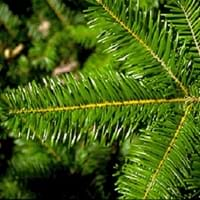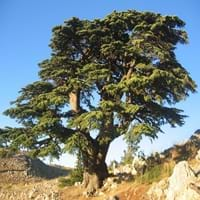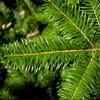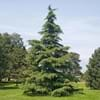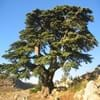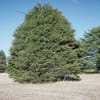Life Span
Perennial
Perennial
Type
Needled or Scaled Evergreen
Needled or Scaled Evergreen
Origin
Northwestern United States, Canada
Mediterranean, Turkey, Western Asia
Types
Pacific silver fir (Abies amabilis), noble fir (Abies procera)
Lebanon cedar, Turkish cedar
Number of Varieties
Not Available
Habitat
Hills, Moist Soils
Mountains
USDA Hardiness Zone
5-7
5-9
Sunset Zone
1a, 1b, 2a, 2b, 3a, 3b, 4, 5, 6, 7, 9, 14, 15, 16, 17
3a, 3b, 4, 5, 6, 7, 8, 9, 10, 14, 15, 16, 17, 18, 19, 20, 21, 22, 23, 24
Habit
Upright/Erect
Spreading
Flower Color
Non Flowering Plant
Light Green
Flower Color Modifier
Bicolor
Bicolor
Fruit Color
Not Available
Light brown, Light Green, Lime Green, Sandy Brown
Leaf Color in Spring
Green, Dark Green
Light Green, Gray Green, Dark Green
Leaf Color in Summer
Dark Green
Gray Green, Dark Green
Leaf Color in Fall
Dark Green
Gray Green, Dark Green
Leaf Color in Winter
Dark Green
Gray Green, Dark Green
Leaf Shape
Compound
Needle like
Plant Season
Spring, Summer, Fall, Winter
Spring, Summer, Fall, Winter
Sunlight
Full Sun, Partial Sun, Partial shade
Full Sun, Partial Sun
Growth Rate
Very Fast
Slow
Type of Soil
Loam
Clay, Loam, Sand
The pH of Soil
Acidic, Neutral
Acidic, Neutral, Alkaline
Soil Drainage
Well drained
Well drained
Bloom Time
Early Winter
Mid fall
Tolerances
Drought
Drought
Where to Plant?
Ground
Ground
How to Plant?
Seedlings
Seedlings, Semi-hardwood cuttings
Plant Maintenance
Medium
Medium
Watering Requirements
Needs watering once a week
Never Over-water, Requires regular watering
In Summer
Lots of watering
Lots of watering
In Spring
Moderate
Moderate
In Winter
Average Water
Average Water
Soil pH
Acidic, Neutral
Acidic, Neutral, Alkaline
Soil Type
Loam
Clay, Loam, Sand
Soil Drainage Capacity
Well drained
Well drained
Sun Exposure
Full Sun, Partial Sun, Partial shade
Full Sun, Partial Sun
Pruning
Remove damaged leaves, Remove dead branches, Remove dead leaves
Remove damaged leaves, Remove dead branches, Remove dead leaves
Fertilizers
All-Purpose Liquid Fertilizer
All-Purpose Liquid Fertilizer
Pests and Diseases
Red blotch
Honey fungus, Root rot
Plant Tolerance
Drought
Drought
Flower Petal Number
Single
Single
Fragrant Bark/Stem
No
Yes
Foliage Texture
Fine
Fine
Foliage Sheen
Glossy
Not Available
Attracts
Birds, Squirrels
Aphids
Allergy
allergic conjunctivitis, Sinuses
Asthma, Runny nose, Skin irritation
Aesthetic Uses
Used as Christmas tree, Used for decorating walls, fences, gates, hedges, etc.
Landscape Designing
Beauty Benefits
Good for the Scalp, Remove blemishes
Not Available
Edible Uses
Sometimes
Yes
Environmental Uses
Nesting sites for birds, Prevent Soil Erosion, Shadow Tree
Air purification
Medicinal Uses
Cold, Cough, Fever, Treatment of ulcers
Antiseptic, Expectorant, Respiratory Disorders
Part of Plant Used
Bark, Leaves
Branch, Leaves, Wood
Other Uses
Used as Ornamental plant
Oil is used in perfume, soaps, creams, etc., Used as essential oil, Used for fragrance, Used for its medicinal properties, Used in construction
Used As Indoor Plant
Yes
No
Used As Outdoor Plant
Yes
Yes
Garden Design
Feature Plant
Feature Plant, Shade Trees
Botanical Name
ABIES grandis
CEDRUS libani
Common Name
Abies grandis
Lebanon cedar, cedar of Lebanon
In Hindi
Abies grandis
लेबनान देवदार
In German
Küsten-Tanne
Libanon-Zeder
In French
Abies grandis
Cèdre du Liban
In Spanish
Abies grandis
Cedrus libani
In Greek
Abies grandis
Λίβανος κέδρου
In Portuguese
Abies grandis
Cedro-do-líbano
In Polish
Jodła olbrzymia
Cedr libański
In Latin
Abies grandis
Cedrus libani
Phylum
Coniferophyta
Coniferophyta
Class
Pinopsida
Pinopsida
Clade
Not Available
Not Available
Tribe
Not Available
Not Available
Subfamily
Not Available
Not Available
Number of Species
Not Available
Importance of Grand Fir and Cedar of Lebanon
Want to have the most appropriate plant for your garden? You might want to know the importance of Grand Fir and Cedar of Lebanon. Basically, these two plants vary in many aspects. Compare Grand Fir and Cedar of Lebanon as they differ in many characteristics such as their life, care, benefits, facts, etc. Every gardener must at least have the slightest clue about the plants he wants to plant in his garden. Compare their benefits, which differ in many ways like facts and uses. The medicinal use of Grand Fir is Cold, Cough, Fever and Treatment of ulcers whereas of Cedar of Lebanon is Antiseptic, Expectorant and Respiratory Disorders. Grand Fir has beauty benefits as follows: Good for the Scalp and Remove blemishes while Cedar of Lebanon has beauty benefits as follows: Good for the Scalp and Remove blemishes.
Compare Facts of Grand Fir vs Cedar of Lebanon
How to choose the best garden plant for your garden depending upon its facts? Here garden plant comparison will help you to solve this query. Compare the facts of Grand Fir vs Cedar of Lebanon and know which one to choose. As garden plants have benefits and other uses, allergy is also a major drawback of plants for some people. Allergic reactions of Grand Fir are allergic conjunctivitis and Sinuses whereas of Cedar of Lebanon have Asthma, Runny nose and Skin irritation respectively. Having a fruit bearing plant in your garden can be a plus point of your garden. Grand Fir has showy fruits and Cedar of Lebanon has showy fruits. Also Grand Fir is not flowering and Cedar of Lebanon is not flowering . You can compare Grand Fir and Cedar of Lebanon facts and facts of other plants too.
